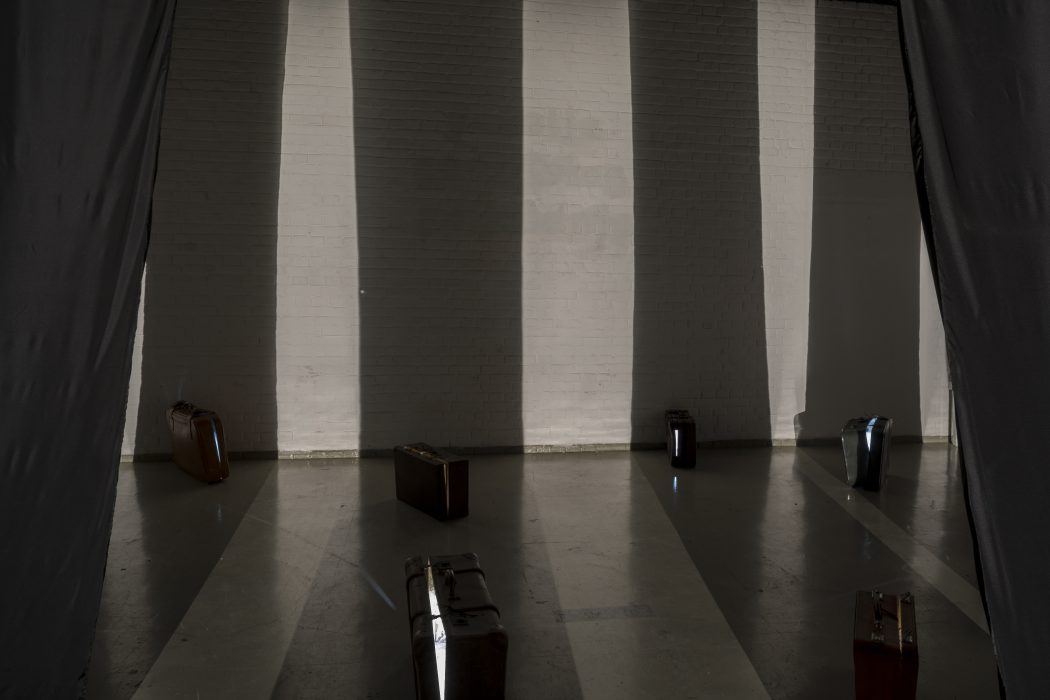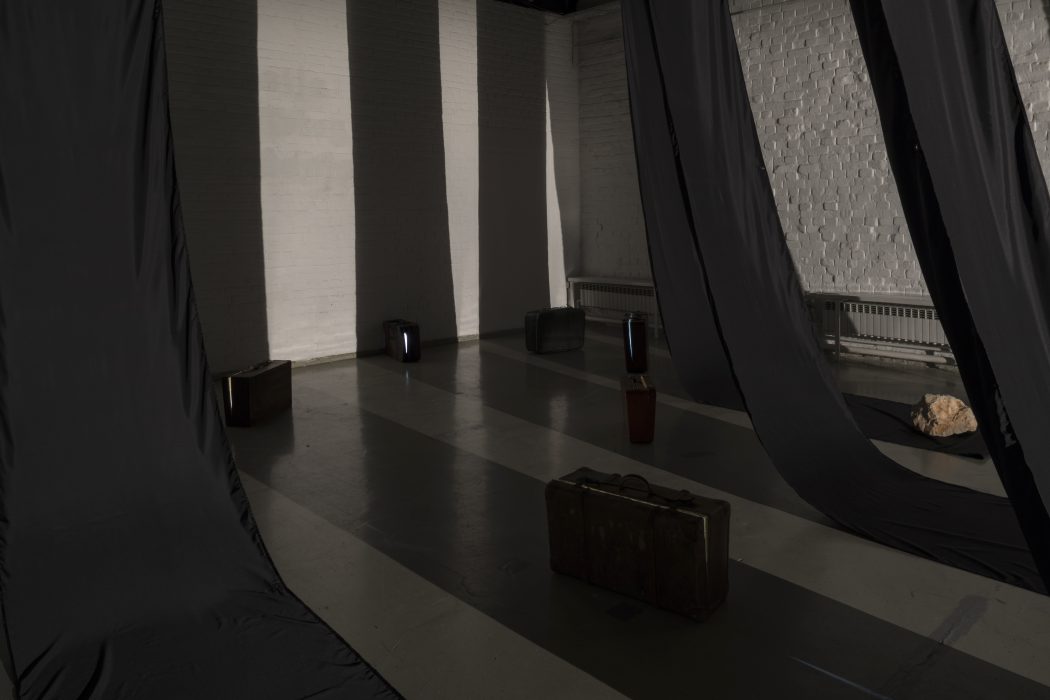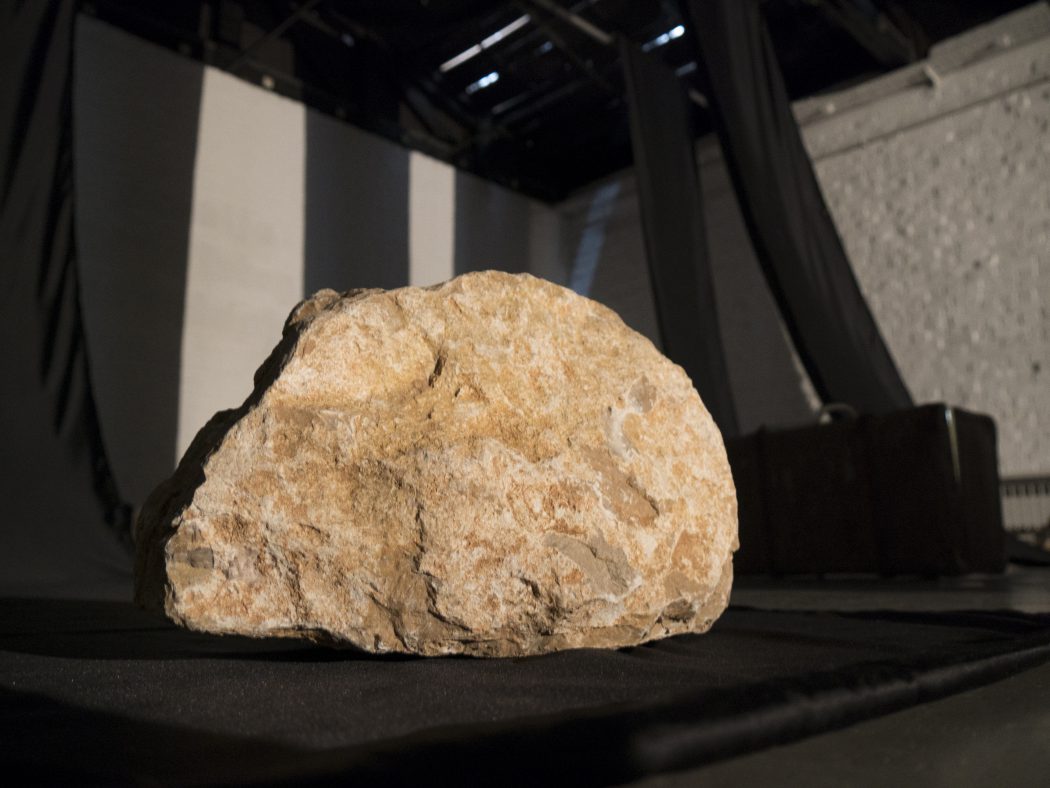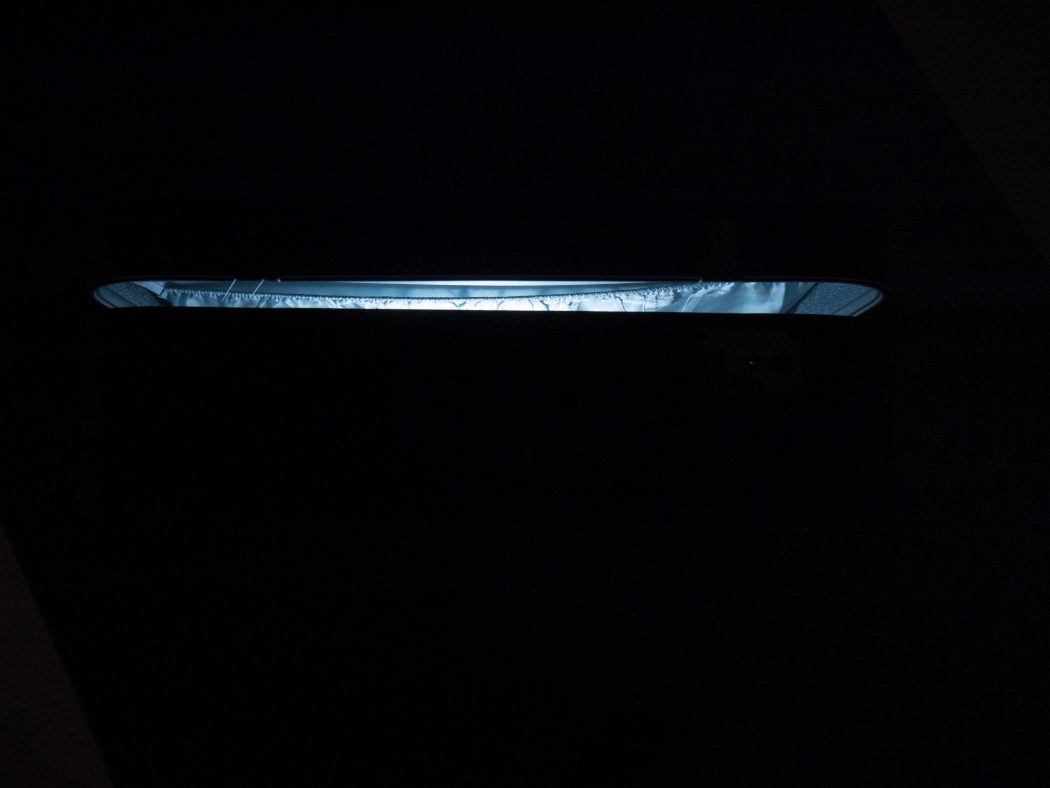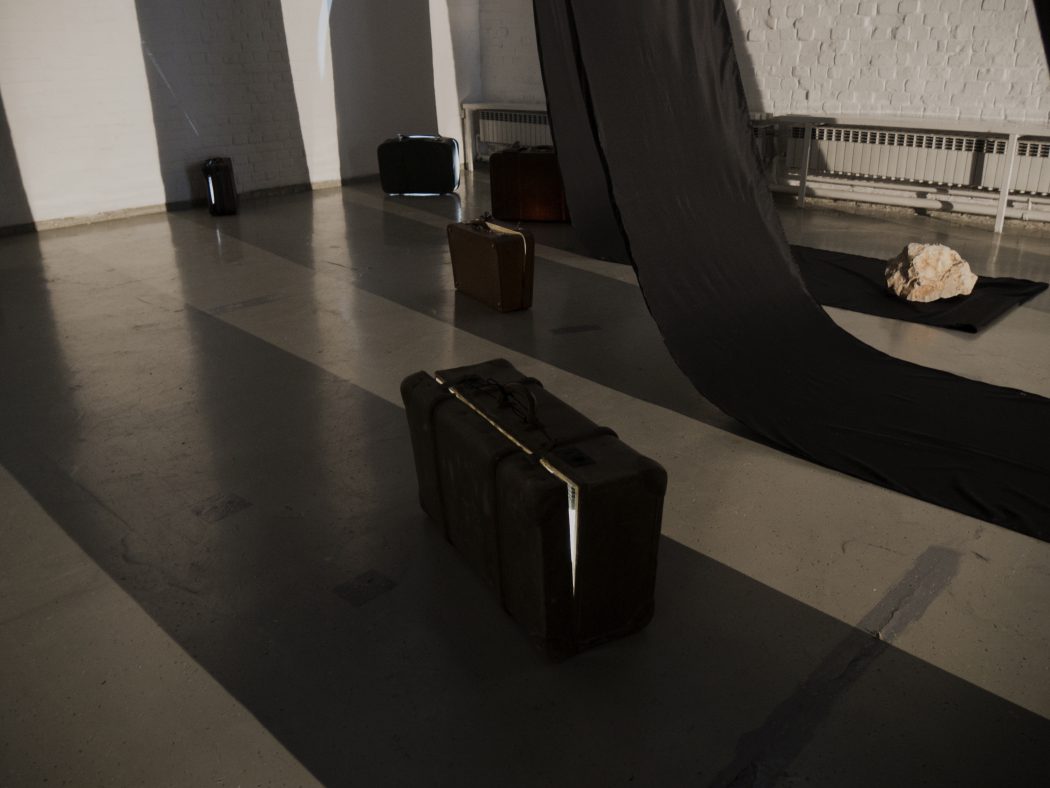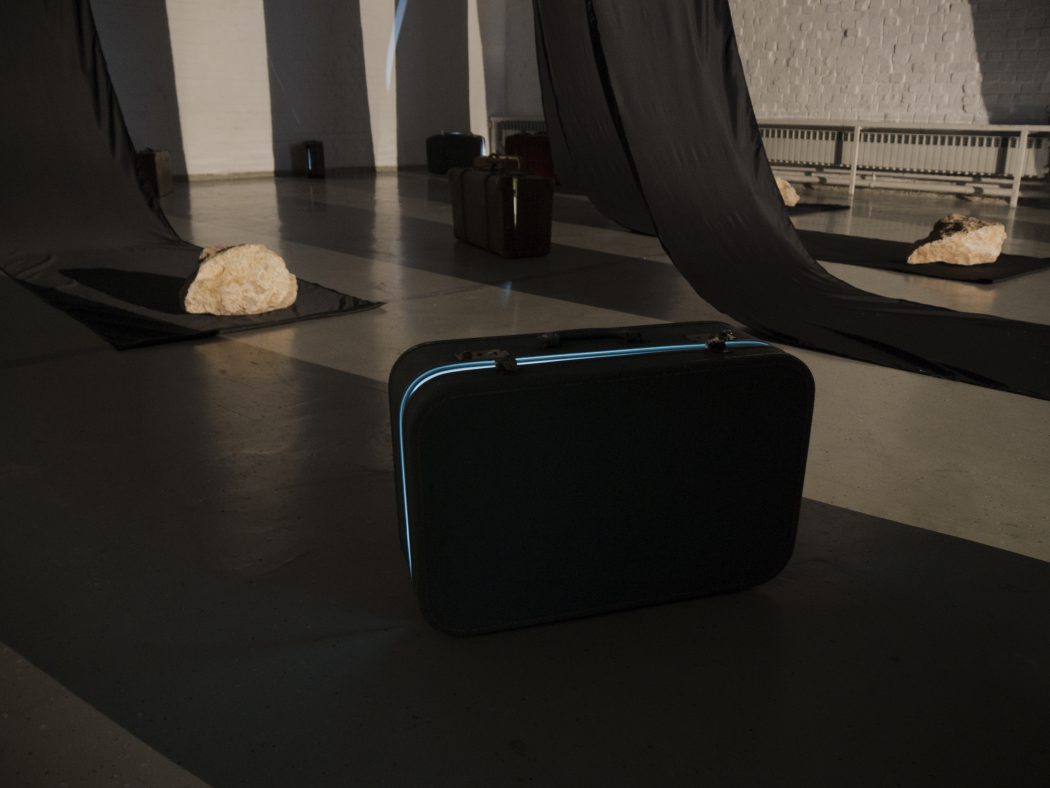The black flags, the entire century
Neli Ružić introduces me to the exhibition by quoting Giorgio Agamben: “The ones who can call themselves contemporary are only those who do not allow themselves to be blinded by the lights of the century and so manage to get a glimpse of the shadows in those lights, of their intimate obscurity. The contemporary is the one whose eyes are struck by the beam of darkness that comes from his own time.” This is instrumental for the understanding of the scene in question. The single-room exhibition space of SC Gallery is mostly filled with flags hanging from high ceiling to the floor creating a static, scenographical ambience…the flags are arranged upright using stones which keep them in place thus blocking unrest of their likely fluttering. The stones are large, rough, earth-toned, from her native island of Šolta, thus carrying rural connotations and contrasting the scene in which they appear as well as the purity of the exhibiting space. The ambience is theatrically illuminated using a reflector strong enough to dim the space between the flags; and used old suitcases are placed within the shaded fields just open enough for small amount light to peep from their interior. What migrations is Neli Ružić speaking of, in the country of constant, economic, political, difficult emigrations and country that witnesses continuous exodus with half-empty suitcases? She is speaking of their persistence, continuous departures and partings that she experienced, too. She is speaking during the intense debate about the controversial upcoming migrant wave. Traces of light piercing from suitcases and reminding of different historical epochs suggest that life always finds a way. The simplicity of the sight and leanness of elements and symbols Ružić employs to communicate with the observer only stress the intensity of experience. Everything fits into only four elements: flags, stones, suitcases and light-darkness, the century-old burden of social, political and migration weights.
Janka Vukmir (excerpt from curatorial text)

